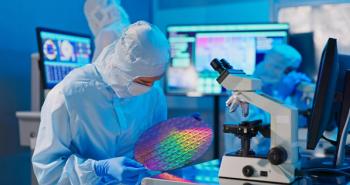
Powering the Future: How Elemental Analysis Drives Lithium-Ion Battery Safety and Performance
Key Takeaways
- Elemental analysis is vital for LIB safety, performance, and sustainability, detecting impurities and tracing material origins.
- ICP-OES and ICP-MS are essential techniques, each with unique strengths, for comprehensive elemental analysis in LIBs.
Elemental analysis using ICP-OES and ICP-MS is essential across the lithium-ion battery lifecycle—ensuring safety, performance, traceability, and sustainable recycling from mining to manufacturing and end-of-life recovery.
As the world accelerates toward electrification and decarbonization, lithium-ion batteries (LIBs) have emerged as the cornerstone of clean energy storage. But behind every high-performance battery lies a complex web of chemistry, compliance, and quality control—one that hinges on the precision of elemental analysis.
In a recent Peer ExchangeTM hosted by Agilent Technologies, experts from academia, industry, and national laboratories gathered to explore the critical role of elemental analysis in the LIB value chain. From mining and refining to manufacturing and recycling, the panelists emphasized how spectroscopy techniques—particularly inductively coupled plasma optical emission spectrometry (ICP-OES) and mass spectrometry (ICP-MS)—are essential for ensuring battery safety, performance, and sustainability.
The Impurity Imperative
“Impurities are one of the most underestimated drivers of performance and safety in batteries,” said Carlos Abad of BAM, Germany’s Federal Institute for Materials Research and Testing. Whether it’s iron, sulfur, or trace uranium, even minute contaminants can catalyze unwanted reactions, degrade electrolytes, or trigger thermal runaway.
Brittani Kearns, analytical laboratory manager at Veolia, noted that metallic impurities can interfere with ion transport, increasing internal resistance and reducing capacity.
“It starts at the beginning,” she said. “You really want to catch these impurities before the battery is assembled.”
Sascha Nowak, head of Analytics and Environment at the MEET Battery Research Center, echoed the sentiment: “Everything that goes wrong in the beginning, you cannot fix later. Early and frequent testing is key.”
Fingerprinting the Future
Elemental analysis doesn’t just detect impurities—it also provides a “fingerprint” of the material’s origin and composition. This is especially important as the European Union prepares to implement the Battery Passport regulation in 2027, which will require full traceability of raw materials (1).
“We’ve seen materials with trace uranium, and by analyzing isotope ratios, we can pinpoint the exact mine they came from,” Abad explained. “This level of traceability is going to be essential for compliance and sustainability.”
Mining, Refining, and Environmental Responsibility
The LIB journey begins in the earth, where lithium is extracted from brines, hard rock, or clay. Each source presents unique challenges.
“Brines are highly corrosive,” Abad said. “They can introduce iron or other metals that affect the final product.”
Kearns emphasized the importance of homogeneity in extraction. “You want a nice, homogeneous feed to get a good fingerprint,” she said. “That helps with downstream purification and quality control.”
Environmental risks loom large at this stage. Leaching of heavy metals into groundwater, tailings dam failures, and air pollution are all concerns. “Analytical chemistry plays a crucial role in monitoring these risks,” Nowak said. “We need to know what’s in the waste—not just for compliance, but because valuable elements might still be recoverable.”
ICP-OES vs. ICP-MS: Complementary Workhorses
When it comes to elemental analysis, ICP-OES and ICP-MS are the industry’s go-to techniques. Each has its strengths.
“ICP-OES is the workhorse,” Abad said. “It has a huge dynamic range and is very robust. Most labs working with battery materials use it.”
Nowak added that ICP-OES is particularly forgiving with high total dissolved solids (TDS) and unknown samples. “If you overload the detector, you can recover quickly. With ICP-MS, you might be cleaning for days.”
That said, ICP-MS offers unmatched sensitivity for trace and ultra-trace elements. “It’s ideal when you’re looking for rare earths or contaminants like uranium,” said Ross Ashdown, applied markets marketing Director at Agilent. “Combining both techniques gives you the best of both worlds.”
Sample Prep: The Hidden Challenge
All panelists agreed: sample preparation is half the battle.
“Proper handling and storage are critical,” Kearns said. “You need to prevent contamination from the chemicals used in digestion.”
Nowak highlighted the lack of standardized reference materials as a major hurdle. “There’s only one certified reference material for lithium-ion batteries,” he said. “We need more to ensure comparability across labs.”
BAM is developing new reference materials for mine samples, expected to be available next year, Abad said.
Recycling and the Rise of Black Mass
As battery demand soars, so does the need for effective recycling. Enter black mass—the shredded remains of spent batteries, rich in lithium, cobalt, nickel, and other critical elements.
“Black mass is like a black box,” Abad said. “Each batch is different. It’s a complex mixture of binders, electrodes, and additives.”
Fluorine content is a particular concern. “We’ve seen up to 7% fluorine in some samples,” he said. “That’s a problem for thermal recycling processes, which can produce hazardous HF gas.”
To tackle these challenges, recyclers rely on ICP-OES for its ability to handle complex matrices. “It can analyze almost the entire periodic table,” Abad said. “With multiple spectral lines per element, we can correct for interferences.”
Safety and Automation
Processing black mass isn’t just an analytical challenge, it’s also a safety issue. “It’s a fine powder with high metal content and reactive fluorine,” Abad said. “It poses occupational hazards.”
Kearns stressed the importance of personal protective equipment (PPE), including respirators and full-body coverage. Ashdown added that some facilities use water showers during shredding to suppress dust and prevent fires.
Automation offers a path forward. “Automated digestion and analysis systems can improve safety, reduce contamination, and increase throughput,” Ashdown said. “It’s an exciting area of development.”
Looking Ahead: Standardization, Sustainability, and Solid-State
As the discussion ended, panelists reflected on the future of elemental analysis in battery production.
Abad identified three key trends: digitalization, traceability, and the circular economy. “Machine learning combined with spectroscopy will help us understand complex data and predict outcomes,” he said.
Nowak pointed to new sample types, like process water from wet shredding, and emerging chemistries like sodium-ion batteries. “Each brings new analytical challenges,” he said.
Kearns called for global standardization. “Right now, it’s a rodeo,” she said. “We need unified methods for digestion and analysis.”
Ashdown, too, is energized by what’s next. “Solid-state batteries are coming,” he said. “They’ll bring new matrices, new contaminants, and new opportunities for spectroscopy to shine.”
References
- Rizos, V.; Urban, P. Implementing the EU Digital Battery Passport.: Opportunities and Challenges for Battery Circularity. Centre for European Policy Studies website. 2024.
https://circulareconomy.europa.eu/platform/sites/default/files/2024-03/1qp5rxiZ-CEPS-InDepthAnalysis-2024-05_Implementing-the-EU-digital-battery-passport.pdf (accessed 2025-10-13).
Newsletter
Get essential updates on the latest spectroscopy technologies, regulatory standards, and best practices—subscribe today to Spectroscopy.





